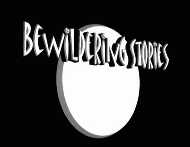Challenge 110
As Dreams are Made of
It is midsummer, and our two new contributors in this issue have sent us a story and prose poem that have a certain dreamlike quality. In what ways do “Clown Dust” and “Devil’s Playground” suggest dreams?
* * *
At the risk of giving away my own answer, I’ll add a general observation about style. When I was a student, literature professors often talked about “symbols” as though we knew what they were. Personally, I hadn’t a clue. But I’ve since figured it out.
We’re all familiar with garden-variety imagery: similes and metaphors. We all learned back in grade school that “My love is like a red, red rose” is a simile. Drop the comparison, “like,” and we have a metaphor: “My love is a red, red rose.”
A symbol is just a metaphor without the referent. Sometimes the referent is obvious; sometimes it isn’t. Here’s a very simple example, from one of Ronsard’s most famous sonnets, “Dearest, let us go see if the rose...” The poem begins by comparing a young lady’s fresh complexion to a rose.
O how wicked is Mother Nature,
For such a flower lives
Only one morning and evening.
In terms of standard imagery, “youthful beauty” is the referent, and “rose” is the image:
- Simile: Your youthful beauty is like a rose.
- Metaphor: Your youthful beauty is a rose.
- Symbol: A rose (“such a flower”) lives only a short time.
Ronsard gives a very pretty expression to a common emotion: “Girl, we’re not getting any younger; don’t keep me waiting.” He’s in a hurry: that’s why he uses the themes of tempus fugit and carpe diem. And why he makes sure the symbol’s referent is obvious. Of course, if we took his poem literally, as a mash note to a young lady, we might imagine her replying either “Yes, let’s” or “In your dreams, Ronsard.”
Now, of what symbols are our new contributors’ dreams made of?
Copyright © 2004 by Bewildering Stories
What is a Bewildering Stories Challenge?

